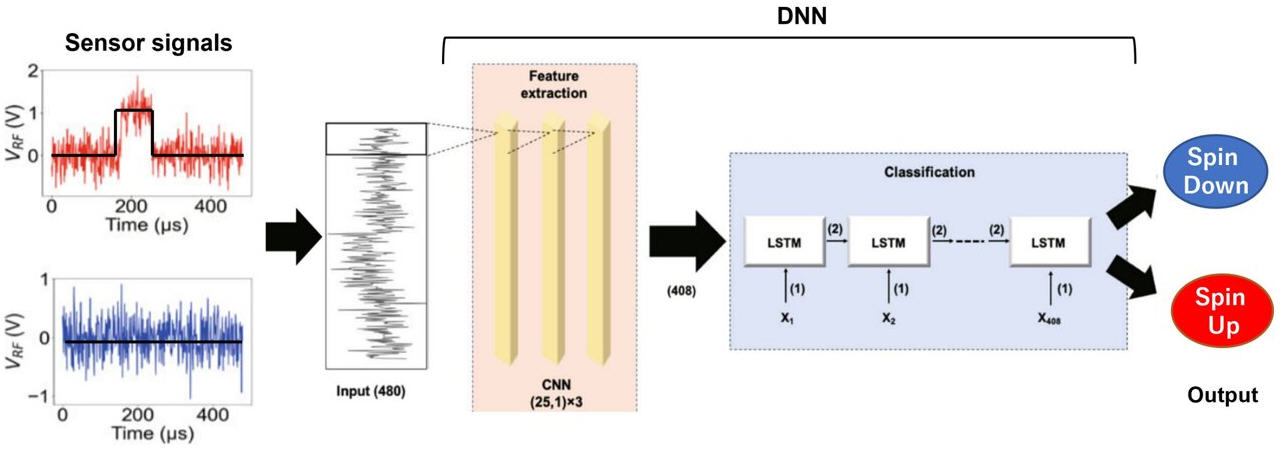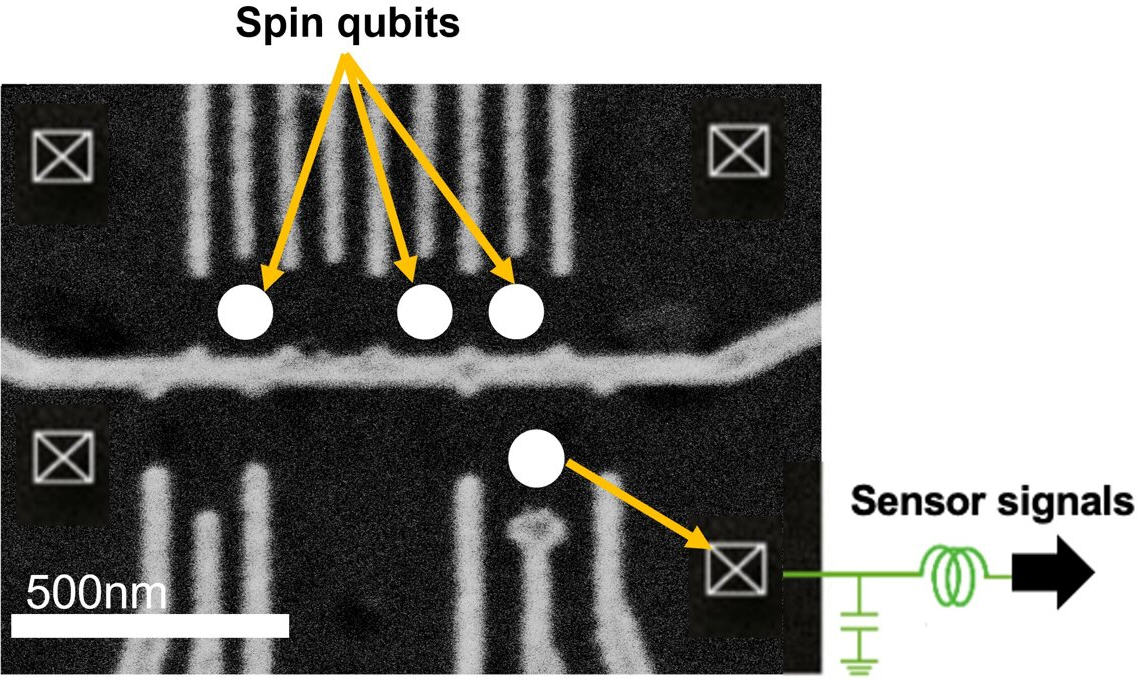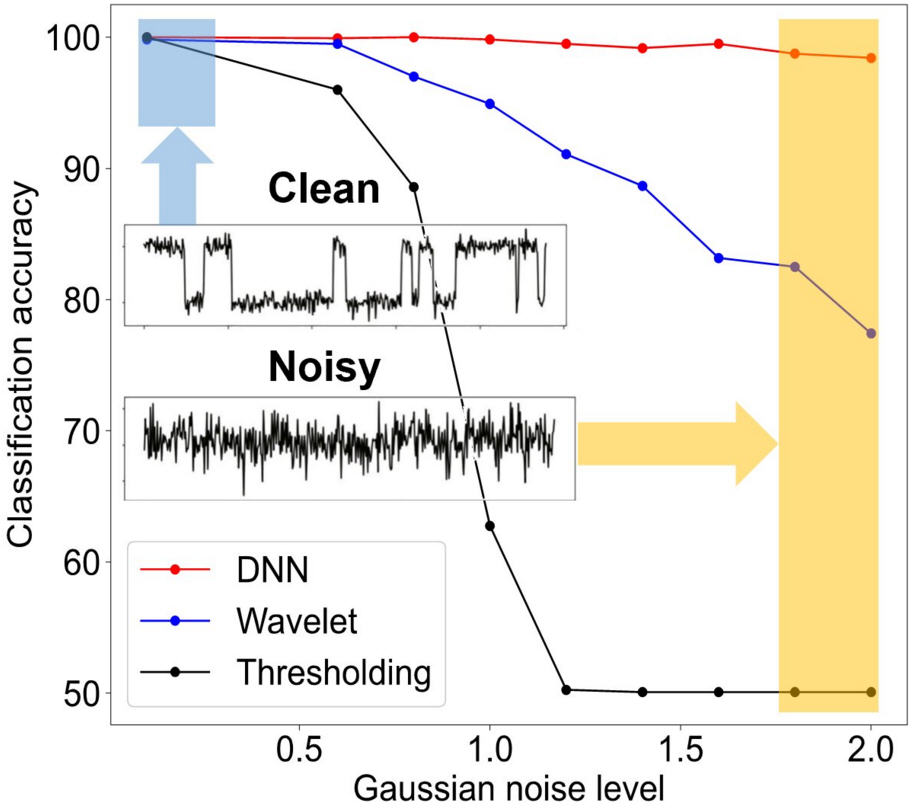博文
突破噪音:人工智能使高保真量子计算成为可能
 精选
精选
||
突破噪音:人工智能使高保真量子计算成为可能
诸平

https://scx2.b-cdn.net/gfx/news/2021/cutting-through-the-no.jpg
Architecture of the DNN classifier . Credit: Yuta Matsumoto et al.

https://scx2.b-cdn.net/gfx/news/2021/cutting-through-the-no-1.jpg
Semiconductor spin quantum-bit (qubit) device. Credit: Yuta Matsumoto et al.

https://scx2.b-cdn.net/gfx/news/2021/cutting-through-the-no-2.jpg
Noise robustness of the DNN classification method. Credit: Yuta Matsumoto et al.
据日本大阪大学(Osaka University)2021年10月18日提供的消息,日德科学家合作突破噪音:人工智能使高保真量子计算成为可能(Cutting through the noise: AI enables high-fidelity quantum computing)。由大阪大学科学与产业研究所(Institute of Scientific and Industrial Research简称SANKEN)领导的研究人员训练了一个深度神经网络,以正确地确定量子比特(quantum bits)的输出状态,尽管存在环境噪声。该团队的新方法可能会让量子计算机得到更广泛的应用。相关研究结果于2021年9月9日已经在《npj量子信息》(npj Quantum Information)杂志网站发表——Yuta Matsumoto, Takafumi Fujita, Arne Ludwig, Andreas D. Wieck, Kazunori Komatani, Akira Oiwa. Noise-robust classification of single-shot electron spin readouts using a deep neural network. npj Quantum Information, 2021, Volume 7, Article number: 136. DOI: 10.1038/s41534-021-00470-7. Published: 09 September 2021. https://doi.org/10.1038/s41534-021-00470-7
参与此项研究的除了来自日本大阪大学科学与产业研究所(Institute of Scientific and Industrial Research简称SANKEN)的研究人员之外,还有来自大阪大学工学研究生院自旋电子学研究网络中心(Center for Spintronics Research Network, Graduate School of Engineering Science, Osaka University)、大阪大学量子信息与量子生物学中心(Center for Quantum Information and Quantum Biology, Osaka University)以及德国波鸿鲁尔大学(Ruhr-Universität Bochum, Gebäude, NB, Germany)的研究人员。
现代计算机是基于二进制逻辑的,其中每一位都被限制为1或0。但由于量子力学的奇怪规则,新的实验系统可以通过允许量子位(quantum bits或者qubits)在1和0的“叠加(superpositions)”中实现更高的计算能力。例如,电子的自旋局限在被称为量子点(quantum dots)的微小岛屿上,它们可以同时向上和向下定向。然而,当一个位的最终状态被读出时,它又恢复到一个方向或另一个方向的经典行为。为了使量子计算(quantum computing)足够可靠,以供消费者使用,就需要创建新的系统,即使信号中有很多噪声,也能准确记录每个量子位的输出消息。
现在,由SANKEN领导的一组科学家使用一种被称为深度神经网络( deep neural network)的机器学习方法来识别量子点上电子自旋方向所产生的信号。
上述论文的合著者Takafumi Fujita解释道:“我们开发了一种基于深度神经网络的分类器,即使在有噪声的信号下也能精确测量量子位态(qubit state)。”
在实验系统中,只有具有特定自旋方向的电子才能离开量子点。当这种情况发生时,就会产生一个暂时的电压增加“光点(blip)”。该团队训练了机器学习算法从噪声中挑选出这些信号。他们使用的深度神经网络有一个卷积神经网络(convolutional neural network)来识别重要的信号特征,并结合一个循环神经网络(recurrent neural network)来监控时间序列数据。
通讯作者Akira Oiwa说:“我们的方法简化了适应强干扰的学习过程,强干扰可能会因情况而异。”该团队首先通过添加模拟噪声和漂移测试了分类器的稳健性。然后,他们训练该算法处理来自一组量子点的实际数据,准确率超过95%。这项研究的结果可能为未来量子计算机中大规模量子位阵列的高保真测量提供可能。
上述介绍,仅供参考。欲了解更多信息,敬请注意浏览原文或者相关报道。
Single-shot readout of charge and spin states by charge sensors such as quantum point contacts and quantum dots are essential technologies for the operation of semiconductor spin qubits. The fidelity of the single-shot readout depends both on experimental conditions such as signal-to-noise ratio, system temperature, and numerical parameters such as threshold values. Accurate charge sensing schemes that are robust under noisy environments are indispensable for developing a scalable fault-tolerant quantum computation architecture. In this study, we present a novel single-shot readout classification method that is robust to noises using a deep neural network (DNN). Importantly, the DNN classifier is automatically configured for spin-up and spin-down traces in any noise environment by tuning the trainable parameters using the datasets of charge transition signals experimentally obtained at a charging line. Moreover, we verify that our DNN classification is robust under noisy environment in comparison to the two conventional classification methods used for charge and spin state measurements in various quantum dot experiments.
https://blog.sciencenet.cn/blog-212210-1308445.html
上一篇:无线电波能冷却到量子基态?
下一篇:突破性证据为量子人工智能扫清了道路